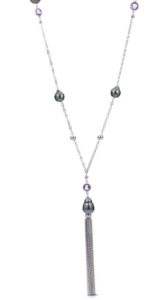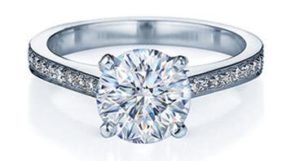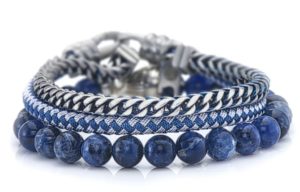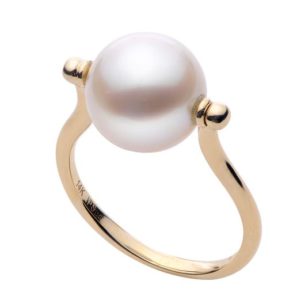Make It Personal
When it comes to buying fine jewelry, the stakes are much higher, for both the gift giver and self-purchaser. Made of precious metals and stones, fine jewelry is typically priced higher than that of costume, and tends to carry more emotional weight in its purchase.
 Championing the competitive edge are specialty jewelers that offer a personal touch that inspires consumer confidence and trust. Pam Danziger, president of Unity Marketing in Stevens, Pennsylvania and author of “Shops That Pop! 7 Steps to Extraordinary Retail Success” explains that because fine jewelry is an emotion-laden object the purchasing experience for the customer becomes emotionally rich as well.
Championing the competitive edge are specialty jewelers that offer a personal touch that inspires consumer confidence and trust. Pam Danziger, president of Unity Marketing in Stevens, Pennsylvania and author of “Shops That Pop! 7 Steps to Extraordinary Retail Success” explains that because fine jewelry is an emotion-laden object the purchasing experience for the customer becomes emotionally rich as well.
Unity research reveals that visiting a real jewelry store (64%) and talking with a real jeweler (45%), as opposed to talking with a sales representative (26%) or researching e-commerce jewelry sites (25%) are the primary ways that fine jewelry customers say they begin their search for a piece.
The physical environment of the store—its scent, lighting, windows, and displays—is essential to the shopping experience, advocates Danziger, noting that these cues guide customers to tell your story. Create photo/share-worthy window/showcase displays; develop in-store holiday traditions and shopping habits; host trunk shows and influencer/stylist/designer events; and offer special services like personal shopper and custom design work.
Community Based
“Making retail personal means crafting the entire shopping experience around the needs and desires of the people in the community you serve,” says Danziger. “People want a product experience when they shop, but it takes more than that to get them off their computers, out of their homes, and into the store. People crave to be more than just a customer. They want more than just a transaction. They want that sense of community that only community-based retailers can give.”
Treat store guests like guests in your home. Offer to take their coats, serve them something to drink. Inspire customers to come visit. Danziger cites the Michigan-based Tapper’s Jewelers clever addition of its Tapper’s Tap Room to its Somerset Collection store by teaming up with a local brewing company to offer a complimentary beer to shoppers.

The more interactive the better, says Neil Shah, Shah Luxury, New York, who hails the ability to offer custom work a game changer for many retailers, especially when it comes to bridal because of the weight of the occasion. “Ever dream of designing your own piece of jewelry? To create that experience for your customers is powerful. People want to be involved in the process.” He reports demand for custom design, whether that means modifying elements of a piece in a collection or designing something from scratch, is “through the roof”.
In fact, Rod Sides, vice chairman of Deloitte cites that because consumers have unlimited alternatives and often bounce between brands, touchpoints and influencers, it’s more difficult for retailers to attract shoppers without some level of customization.
People Business
To make the most of the jewelry shopping experience, jewelers must make sure trained sales staff is on the sales floor at all times to answer questions and provide guidance with authority says Danziger. She hails the secret weapon—engaged storeowners. “One of the secrets of making retail personal that was uncovered in our research is that the more time storeowners devote on the sales floor rubbing shoulders with their neighbors and modeling the service experience they want to see in their sales staff, the more successful their store.”

Scott Rauch, president SHR Jewelry Group, a division of SDC Designs, New York advocates the most important thing jewelers can do is to listen to their customers. “Consumers have a loud voice and are using social media and reviewing product to tell brands and our industry what they want and is relevant to them and why.” He advocates jewelers connect with consumers more effectively, both in store and online to help them find solutions. He cites as an example advising men who come in for an engagement ring what’s possible in wedding bands, as well as gifts for the groom and bridal party. “Also, take the opportunity to talk about style options for him. He may not be thinking of himself, but that’s the perfect time to show him what men are wearing today and how to wear it.”
Be a destination for special product niches like wedding, pearls, color stones, men’s jewelry, children’s jewelry. Pearls and gemstones are especially on trend, and offer jewelers a profitable product that’s difficult to price shop.
Imperial Pearl
Kathy Grenier, vice president of business development for Imperial Pearl, Providence, Rhode Island champions  pearls. “It makes sense to have pearls. You can buy, sell and easily make a comfortable margin with pearls. It offers a healthy business that can set your store apart. But jewelers must invest in a selection of styles and price points, and must talk pearls up, display them, advertise and market them.” She notes that Imperial is helping its retailers with trend forecasts to find the right the mix of product for retailers in their demographic. She notes that pearls have a great back-story that’s organic, natural, exotic, and full of love.
pearls. “It makes sense to have pearls. You can buy, sell and easily make a comfortable margin with pearls. It offers a healthy business that can set your store apart. But jewelers must invest in a selection of styles and price points, and must talk pearls up, display them, advertise and market them.” She notes that Imperial is helping its retailers with trend forecasts to find the right the mix of product for retailers in their demographic. She notes that pearls have a great back-story that’s organic, natural, exotic, and full of love.
Bain & Company, in its luxury market report for 2017, identifies the retail store as the “epicenter of brand storytelling”, clarifying that high-touch not high-tech is the way to inspre millennials.







